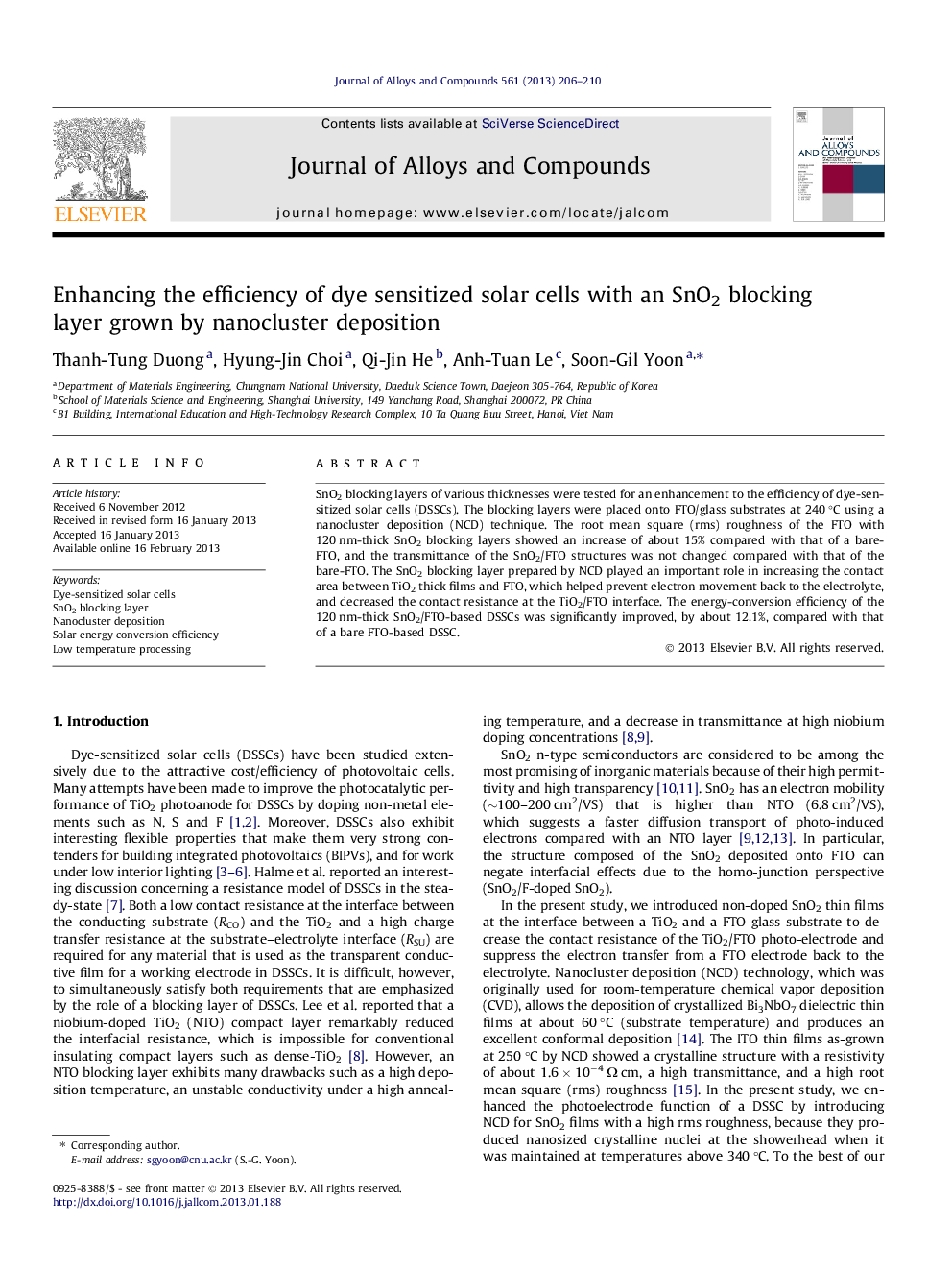| Article ID | Journal | Published Year | Pages | File Type |
|---|---|---|---|---|
| 1614424 | Journal of Alloys and Compounds | 2013 | 5 Pages |
SnO2 blocking layers of various thicknesses were tested for an enhancement to the efficiency of dye-sensitized solar cells (DSSCs). The blocking layers were placed onto FTO/glass substrates at 240 °C using a nanocluster deposition (NCD) technique. The root mean square (rms) roughness of the FTO with 120 nm-thick SnO2 blocking layers showed an increase of about 15% compared with that of a bare-FTO, and the transmittance of the SnO2/FTO structures was not changed compared with that of the bare-FTO. The SnO2 blocking layer prepared by NCD played an important role in increasing the contact area between TiO2 thick films and FTO, which helped prevent electron movement back to the electrolyte, and decreased the contact resistance at the TiO2/FTO interface. The energy-conversion efficiency of the 120 nm-thick SnO2/FTO-based DSSCs was significantly improved, by about 12.1%, compared with that of a bare FTO-based DSSC.
► SnO2 blocking layer was deposited by nanocluster deposition (NCD) at low temperature. ► SnO2 blocking layer increased the contact area between TiO2 thick films and FTO. ► SnO2 blocking layer prevented the electron movement back to the electrolyte. ► SnO2 blocking layer decreased the contact resistance at a TiO2/FTO interface.
